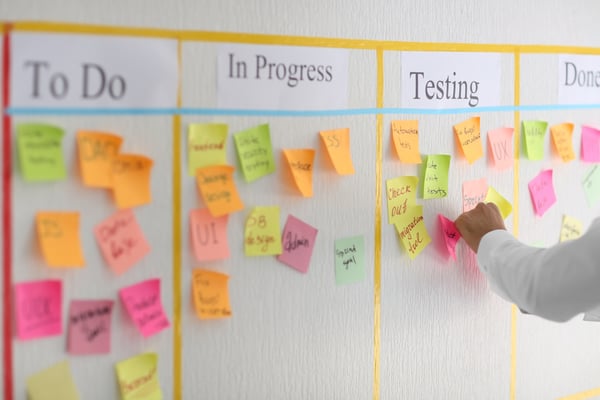It’s easy to understand why so many organizations are turning to Agile. Being able to quickly adapt to new technology, innovation and continuous improvement is what keeps organizations one step ahead of their competition. But, “going Agile” isn’t as easy as it sounds. This change in mindset not only requires people to think in a whole new way, it requires the entire organization to do different things, in different ways. 
Contrary to popular belief, you cannot simply send a few people to Agile Training and then say, “We are Agile now.” Instead, organizations need to realize Agile is a culture change that completely alters how the organization operates. And that means it needs to be implemented in a way that is entirely different from the traditional implementation approaches used in the past. The fact is, Agile won’t fail because of its techniques, it will fail if it is not implemented properly.
Agile is Transformational in Scope
Implementing Agile is 2nd Order, transformational change. It will change how the organization operates across all aspects of the business including the IT department, the PMO and the Business Units. Like all transformational changes, going Agile:
- Can’t be done incrementally; you can’t make the leap across the abyss in two jumps
- Can’t be made totally safe; it requires a “leap of faith”
- Can’t be done only half way; once you start the journey you can’t go back to the old way
In order to drive the cultural adjustment to an Agile mindset, a large investment of time and resources will need to be made. Behavioral elements of the new culture will need to be integrated into the organization’s current operating structure including new expectations for behavior and appropriate reinforcements. Sustained, active commitment from leadership is a must. If leaders are not prepared to be active participants in the shift to Agile, the culture change is at risk of failure.
Best Practices to Implement Agile
Here are a few best practices needed to implement Agile based on the AIM Change Management Methodology:
- Use a Structured Change Management Methodology --like AIM-- to manage the people side of the implementation with rigor and discipline. A solid Implementation Plan that includes specific strategies for building Sponsorship, Readiness, Reinforcement, Communication, and Change Agent Capacity is needed to succeed.
- Re-Define What Success Looks Like by identifying the behaviors “you seek to see” in the future state. You can’t send emails from the top of the organization to tell people you are now Agile. Instead, new behaviors must be identified for each Target group impacted by the change.
- Make certain you have visible, active Sponsors who demonstrate their personal commitment to the change (not just giving you lip-service of "support") and who are prepared to lead differently. Every Sponsor down and across the organization that has direct reports affected by the change must actively Express, Model and Reinforce their commitment to the change.
- Develop Skilled Change Agents who have responsibility for the implementation. You need Agents with trust and credibility with both Sponsors and Targets in the right numbers, and in the right places. These Change Agents need to be working with project SME’s on the project team right from the start.
- Change the Reinforcements. The only way to drive culture change like going Agile is to change the reinforcements. Process follows reinforcement. So, it makes sense that if you want to drive culture change at speed, the new reinforcements need to be radically different, powerful and very visible.
AIM & Agile…A Perfect Fit
At their core both Agile and AIM assume circumstances change as a project develops. In Agile, the Planning, Design, Development and Testing cycles continue to change as the project takes form. The AIM Change Management process was developed with similar goals in mind.
AIM is a fit-for-purpose change management methodology built to increase speed in a culture of constant change and improvement. AIM was developed to be flexible based on what is occurring in the moment. It’s ten core principles are meant to be used as a guide on what to be do based on the day to day realities of the project.
The Accelerating Implementation Methodology (AIM) is ideally suited for an Agile world. The two processes marry together in a perfect fit. Implementing them together will ensure you are on the path to sustained adoption not just for the initial implementation of Agile, but also for what Agile implements.


